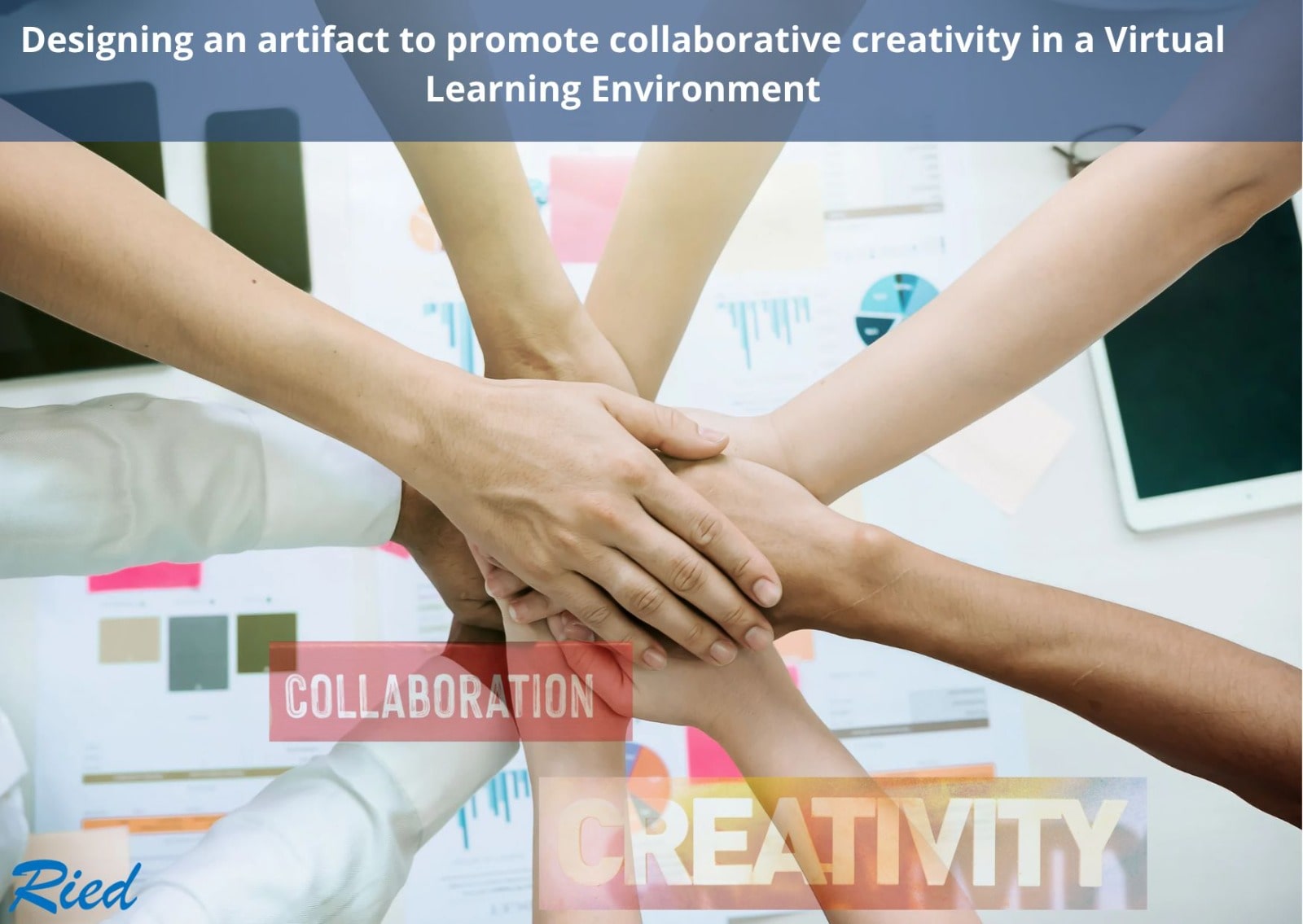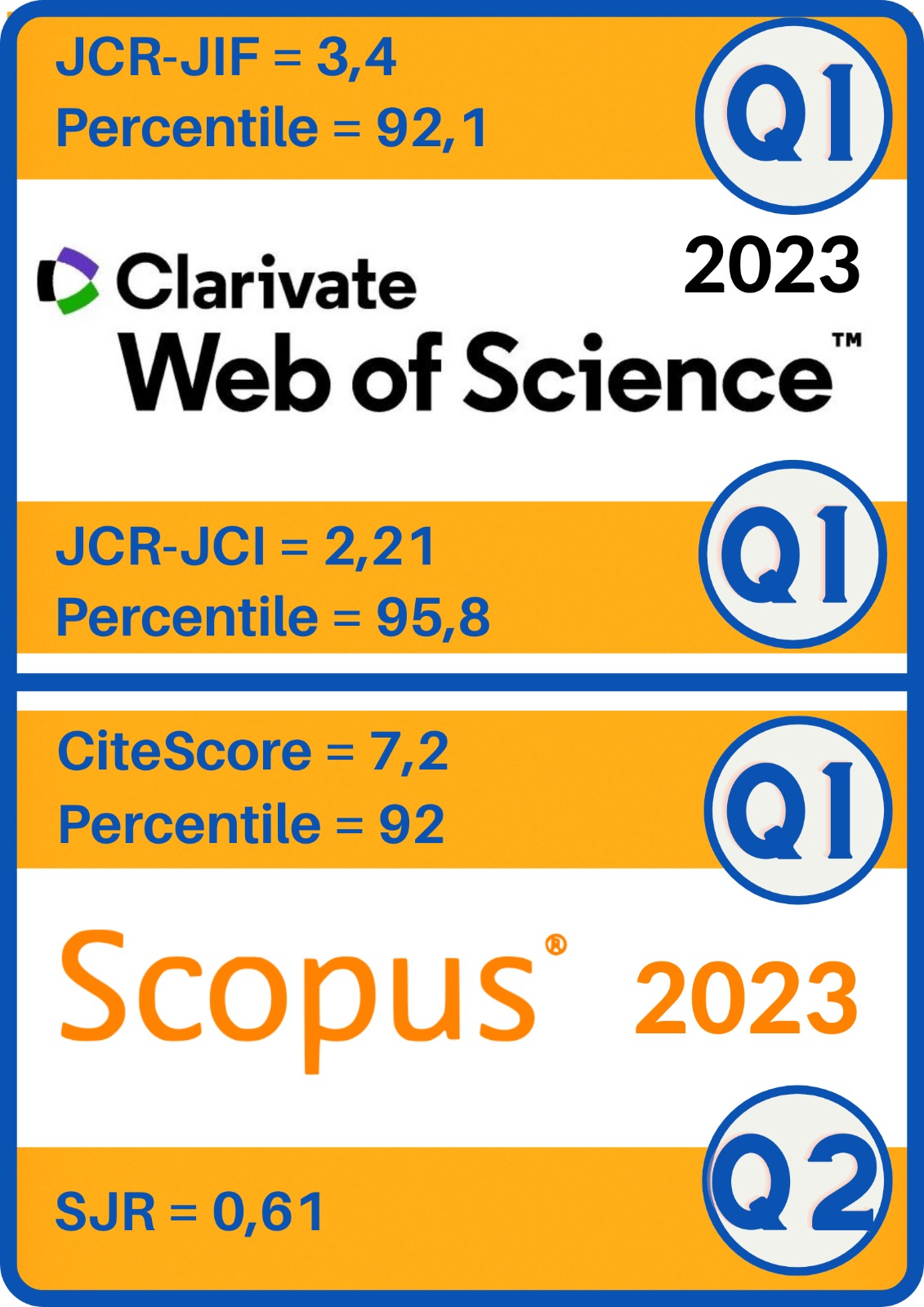Designing a Virtual Learning Environment to Promote Collaborative Creativity in University Students
DOI:
https://doi.org/10.5944/ried.26.2.36209Keywords:
creativity, virtual learning environment, collaboration, educational design research, digital technologiesAbstract
Creativity is valuable to humanity, so different governments have sought to promote it through education. Despite these efforts, educational models are based on traditional methods that hinder creativity. It is essential to design environments that promote creative potential through the context characteristics and the agents' perspectives involved. Based on educational design research, we set up a virtual learning environment that promotes collaborative creativity in university students. We carried out the research in an annual course on educational psychology, where students organized into teams developed creative proposals for intervention. We iterated this course with four generations of students (n=81), in which the prototype of the virtual environment was designed, implemented, and evaluated. We evaluated the prototype from two dimensions: 1) the creativity perceived in the intervention proposals; 2) the collaboration that arose in the virtual learning environment. We observed that the most creative proposals corresponded to those made by the last generation. Likewise, the students who interacted the most with digital tools were those from the same cohort. We concluded that to promote creativity, it is essential that the environment is characterized by having digital tools familiar to the student, encourages everyone's creativity, fosters dialogue, provides clarity regarding creative tasks, and that the teacher advises the process.
FULL ARTICLE:
https://revistas.uned.es/index.php/ried/article/view/36209/27662
Downloads
References
Amabile, T. M. (1982). Social psychology of creativity: A consensual assessment technique. Journal of Personality and Social Psychology, 43, 997-1013. https://doi.org/10.1037/0022-3514.43.5.997
Amabile, T. M. (2017). In pursuit of everyday creativity. The Journal of Creative Behavior, 51(4), 335-337. https://doi.org/10.1002/jocb.200
Andreasen, N. C., y Ramchandran, K. (2022). Creativity in art and science: are there two cultures? Dialogues in clinical neuroscience, 14(1), 49-54. https://doi.org/10.31887/DCNS.2012.14.1/nandreasen
Baruah, J., y Paulus, P. B. (2019). Collaborative creativity and innovation in education. En C. A. Mullen (Ed.), Creativity Under Duress in Education? (pp. 155-177). Springer. https://doi.org/10.1007/978-3-319-90272-2_9
Creely, E., y Henriksen, D. (2019). Creativity and digital technologies. Encyclopedia of educational innovation, 1-6. https://doi.org/10.1007/978-981-13-2262-4_143-1
Csikszentmihalyi, M. (2015). The systems model of creativity: The collected works of Mihaly Csikszentmihalyi. Springer: USA. https://doi.org/10.1007/978-94-017-9085-7
Delgado, M., y Solano, A. (2015). Estrategias didácticas creativas en entornos virtuales para el aprendizaje. Actualidades Investigativas en Educación, 9(2), 1-21. https://doi.org/10.15517/aie.v9i2.9521
Díaz-Barriga, F. (2006). Enseñanza situada vínculo entre la escuela y la vida. McGraw-Hill. https://www.uv.mx/rmipe/files/2016/08/Ensenanza-situada-vinculo-entre-la-escuela-y-la-vida.pdf
Elisondo, R. C. (2015). La creatividad como perspectiva educativa. Cinco ideas para pensar los contextos creativos de enseñanza y aprendizaje. Actualidades investigativas en educación, 15(3), 566-588. https://doi.org/10.15517/aie.v15i3.20904
Fürst, G., y Grin, F. (2018). A comprehensive method for the measurement of everyday creativity. Thinking Skills and Creativity, 28, 84-97. https://doi.org/10.1016/j.tsc.2018.03.007
Glăveanu, V. P. (2010a). Paradigms in the study of creativity: Introducing the perspective of cultural psychology. New ideas in psychology, 28(1), 79-93. https://doi.org/10.1016/j.newideapsych.2009.07.007
Glăveanu, V. P. (2010b). Principles for a cultural psychology of creativity. Culture & Psychology, 16(2), 147-163. https://doi.org/10.1177/1354067X10361394
Guilford, J. P. (1950). Creativity. American Psychologist, 5(9), 444-454. https://doi.org/10.1037/h0063487
Helfand, M., Kaufman, J. C., y Beghetto, R. A. (2016). The Four C Model of Creativity: Culture and context. En V. P. Glăveanu (Ed.), Palgrave handbook of creativity and culture research (pp. 15-360). Palgrave. https://doi.org/10.1057/978-1-137-46344-9_2
Hernández-Torrano, D., e Ibrayeva, L. (2020). Creativity and education: A bibliometric mapping of the research literature (1975-2019). Thinking skills and creativity, 35, 100625. https://doi.org/10.1016/j.tsc.2019.100625
Hong, S. W., Lee, Y. G., y Kalay, Y. (2013, Julio). The effects of online multiuser virtual environments on creative motivation in collaborative design studios. [Ponencia]. International Conference on Human-Computer Interaction, Berlin, Alemania. https://doi.org/10.1007/978-3-642-39476-8_101
Jacobs, G. M., y Lawson, N. D. (2017). Collaboration Can Promote Students' Creativity. Online Submission. https://files.eric.ed.gov/fulltext/ED591105.pdf
Karakaya, A. F., y Demirkan, H. (2015). Collaborative digital environments to enhance the creativity of designers. Computers in Human Behavior, 42, 176-186. https://doi.org/10.1016/j.chb.2014.03.029
Kaufman, J. C., y Beghetto, R. A. (2009). Beyond big and little: The four c model of creativity. Review of general psychology, 13(1), 1-12. https://doi.org/10.1037/a0013688
Kim, K. H. (2011). The creativity crisis: The decrease in creative thinking scores on the Torrance Tests of Creative Thinking. Creativity Research Journal, 23(4), 285-295. https://doi.org/10.1080/10400419.2011.627805
Kupers, E., Lehmann-Wermser, A., McPherson, G., y van Geert, P. (2019). Children’s Creativity: A Theoretical Framework and Systematic Review. Review of Educational Research, 89(1), 93-124. https://doi.org/10.3102/0034654318815707
Kupers, E., Van Dijk, M., y Lehmann-Wermser, A. (2018). Creativity in the here and now: A generic, micro-developmental measure of creativity. Frontiers in psychology, 9, 2095. https://doi.org/10.3389/fpsyg.2018.02095
Leach, J., y Stevens, C. J. (2020). Relational creativity and improvisation in contemporary dance. Interdisciplinary Science Reviews, 45(1), 95-116. https://doi.org/10.1080/03080188.2020.1712541
Lehtonen, D., Jyrkiäinen, A., y Joutsenlahti, J. (2019). A systematic review of educational design research in Finnish doctoral dissertations on mathematics, science, and technology education. Lumat, 7(3). https://doi.org/10.31129/LUMAT.7.3.399
Loui, P. (2018). Rapid and flexible creativity in musical improvisation: review and a model. Annals of the New York Academy of Sciences, 1423(1), 138-145. https://doi.org/10.1111/nyas.13628
Luque, G. (2020). La creatividad en el sistema educativo actual de Corea del Sur. Reflexión comparada desde la filosofía de John Dewey. Estudios de Asia y África, 55(3), 459-479. https://doi.org/10.24201/eaa.v55i3.2516
McKenney, S., y Reeves, T. C. (2021). Educational design research: portraying, conducting, and enhancing productive scholarship. Medical Education, 55(1), 82-92. https://doi.org/10.1111/medu.14280
Morgan, S., y Forster, J. (1999). Creativity in the classroom. Gifted Education International, 14(1), 29-43. https://doi.org/10.1177/026142949901400105
Naciones Unidas. (2020). Resolución aprobada por la Asamblea General el 19 de diciembre de 2019. https://undocs.org/es/A/RES/74/198
Nasreen, S., Roy, A. K., y Guha, R. (2022, Julio). Exploring ‘Little-c’ Creativity Through Eye-parameters. [Ponencia]. 44th Annual International Conference of the IEEE Engineering in Medicine y Biology Society, Glasgow, Reino Unido. https://doi.org/10.1109/EMBC48229.2022.9871652
Rhodes, M. (1961). An analysis of creativity. The Phi Delta Kappan, 42(7), 305-310.
Sanz, G., y Rosso, L. M. (2016). Creatividad y educación en China. Algunas ideas sobre el debate actual. Journal of Supranational Policies of Education, 4, 177-191. https://revistas.uam.es/jospoe/article/view/5673
Sawyer, R. K. (2006). Educating for innovation. Thinking skills and creativity, 1(1), 41-48. https://doi.org/10.1016/j.tsc.2005.08.001
Sawyer, R. K. (2017a). Teaching creativity in art and design studio classes: A systematic literature review. Educational research review, 22, 99-113. https://doi.org/10.1016/j.edurev.2017.07.002
Sawyer, R. K. (2017b). Creativity research and cultural context: Past, present, and future. The Journal of Creative Behavior, 51(4), 352-354. https://doi.org/10.1002/jocb.204
Simonton, D. K. (1994). Greatness: Who makes history and why. Guilford Press.
Tang, C., Mao, S., Xing, Z., y Naumann, S. (2022). Improving student creativity through digital technology products: A literature review. Thinking Skills and Creativity, 101032. https://doi.org/10.1016/j.tsc.2022.101032
Torrance, E. P. (1972). Predictive validity of the Torrance Tests of Creative Thinking. The Journal of Creative Behavior, 6(4), 236-252. https://doi.org/10.1002/j.2162-6057.1972.tb00936.x









